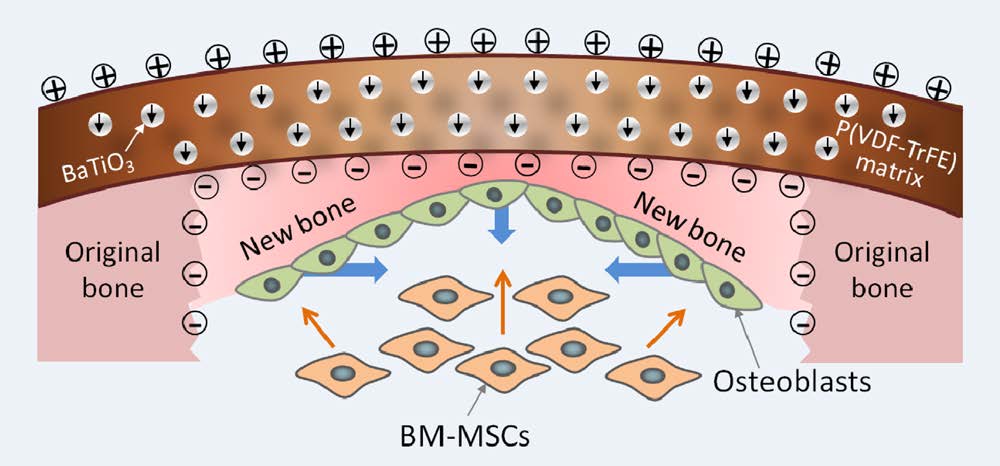|
纳米复合膜介导的生理电位微环境促进骨再生
北京大学口腔医院的邓旭亮教授课题组研究了生理电位微环境在骨缺损修复中的应用。生理电位微环境在维持骨量和骨的功能工程中起到重要作用。尽管植入材料在仿生天然骨的结构、形貌、力学和化学性质等方面取得长足的发展,但在仿生骨生理电位方面,通过恢复生理电位进行植入材料的设计目前很少设计。该课题组通过构建可模拟内源性生理电位的柔性纳米复合材料体系,探索其在骨缺损修复中的有效性。该材料体系由电活性纳米颗粒与铁电聚合物组成。通过调节纳米填料的含量以及极化处理工艺,纳米复合膜的表面电势可以达到生理电位的量级水平。而且该纳米复合膜有效促进骨髓间充质干细胞(BM-MSCS)的活性与成骨分化。将该复合膜材料植入骨缺损区12周后,纳米复合膜与缺损骨组织间可以形成稳定的电学微环境,并通过恢复该电学微环境引发快速的骨再生和完整成熟的骨结构形成。本研究表明恢复生理电位微环境的生物材料设计理念可能会为今后的骨修复材料提供一个适于骨再生疗法的新策略。 Physiological electric potential is well-known for its indispensable role in maintaining bone volume and quality. Although implanted biomaterials simulating structural, morphological, mechanical, and chemical properties of natural tissue or organ has been introduced in the field of bone regeneration, the concept of restoring physiological electric microenvironment remains ignored in biomaterials design. In this work, a flexible nanocomposite membrane mimicking the endogenous electric potential is fabricated to explore its bone defect repair efficiency. BaTiO3 nanoparticles (BTO NPs) were first coated with polydopamine. Then the composite membranes are fabricated with homogeneous distribution of Dopa@BTO NPs in poly(vinylidene fluoridetrifluoroethylene) (P(VDF-TrFE)) matrix. The surface potential of the nanocomposite membrances could be turned up to 76.8mV by optimizing the composition ratio and corona poling treatment, which conform to the level of endogenous biopotential. Remarkably, the surface potential of polarized nanocomposite membranes exhibited a dramatic stability with more than half of original surface potential remained up to 12 weeks in the condition of bone defect. In vitro, the membranes encouraged bone marrow mesenchymal stem cells (BM-MSCs) activity and osteogenic differentiation. In vivo, the membranes sustainably maintained the electric microenvironment giving rise to rapid bone regeneration and complete mature bone-structure formation. Our findings evidence that physiological electric potential repair should be paid sufficient attention in biomaterials design, and this concept might provide an innovative and well-suited strategy for bone regenerative therapies. (王鹏)
|
